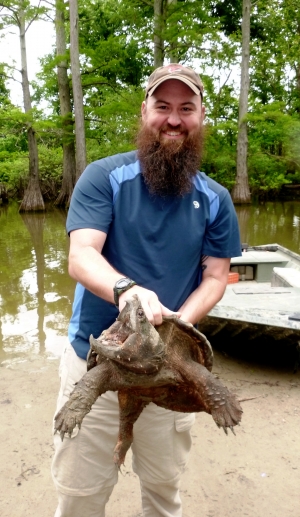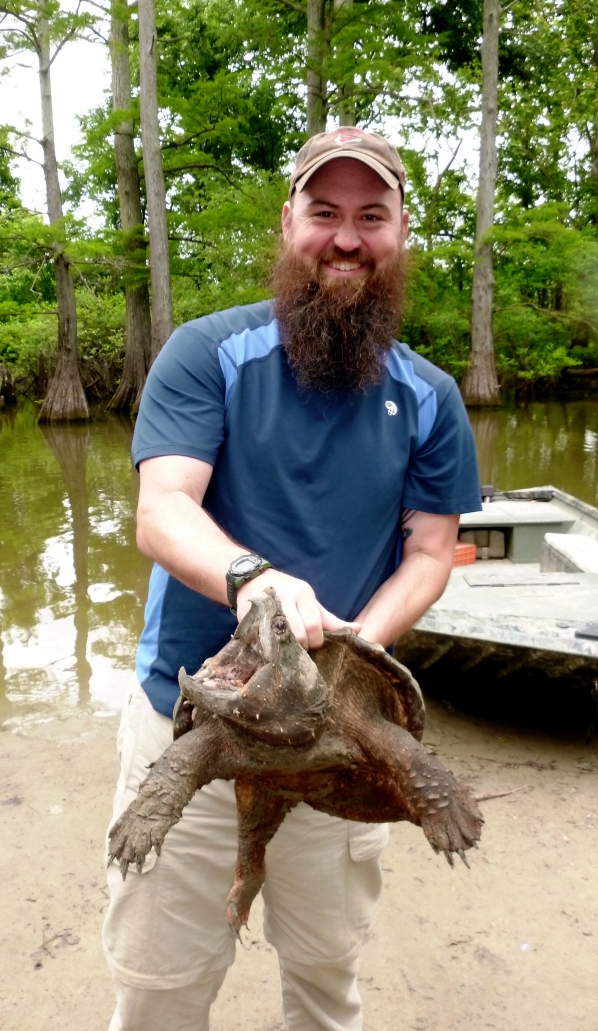Dr. Jon Davenport, assistant professor, Department of Biology
Student and Faculty Excellence (SAFE) fund recipient
Project: Size Matters: The Influence of trap and mesh size on Turtle Captures
Dr. Jon Davenport, Department of Biology, utilized SAFE funding to pay for publication costs for his project.
“The SAFE funds enabled me to pay for the cost of an academic publication. This publication is now available to share with students in my upper-division courses. It also allows me to showcase how student researchers can be co-authors of scientific papers,” said Davenport.
His project was based on understanding how different turtle trapping techniques can have different results to aid wildlife managers and biologists when searching for turtles. Certain turtle species can evade certain nets which can result in misidentifying turtle population sizes.
“If you are targeting threatened and endangered species and fail to detect them. We found that the mesh size of the turtle traps and the overall size of the turtle traps was important to consider, and were dependent on the goals of the managers. For example, larger mesh missed smaller turtle species and also juveniles of larger-bodied species. Overall, these techniques could misidentify turtle population sizes and lead to erroneous conservation values of a site,” said Davenport.
The research initially started while Davenport was an assistant professor at Southeast Missouri State University. He worked in collaboration with the Tennessee Aquarium Conservation Institute and the Tennessee Wildlife Resources Agency (TWRA). TWRA provided funding for the fieldwork and student support.
Davenport and four graduate students from Southeast Missouri State University and Ohio State University focused on five major drainages around the Mississippi River to analyze the effectiveness of certain nets in trapping turtles.
They initially focused on trapping Alligator Snapping Turtles before looking at all turtle species in the location. Alligator Snapping Turtles are currently being determined if they should be listed under the Endangered Species Act by the U.S. Fish and Wildlife Service.
The article was accepted and published by the Wildlife Society Bulletin Journal, a peer-reviewed scientific journal devoted to the ecology of non-domesticated animal species.
###
About the Department of Biology
The Department of Biology is a community of teacher-scholars, with faculty representing the full breadth of biological specializations — from molecular genetics to landscape/ecosystem ecology. The department seeks to produce graduates with sound scientific knowledge, the skills to create new knowledge, and the excitement and appreciation of scientific discovery. Learn more at https://biology.appstate.edu.
Compiled and Written by James Johnston
November 19, 2021
Boone, N.C.

